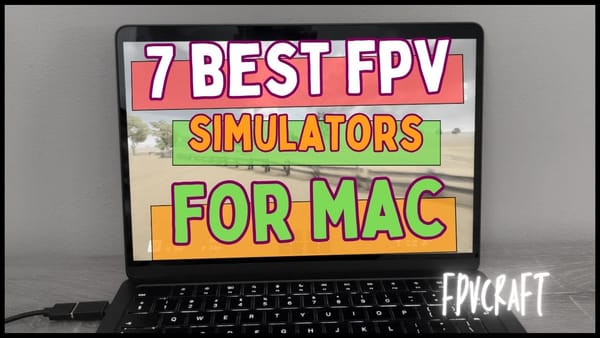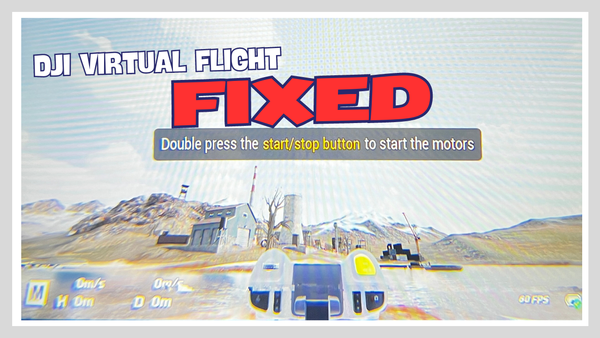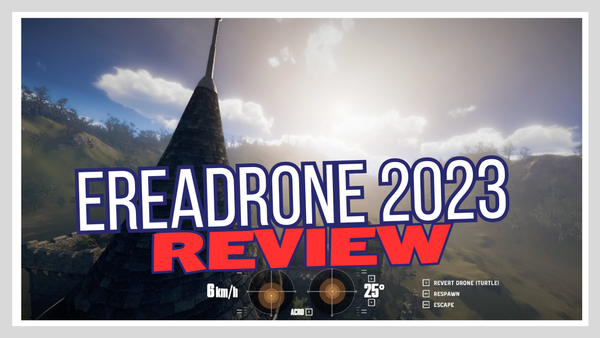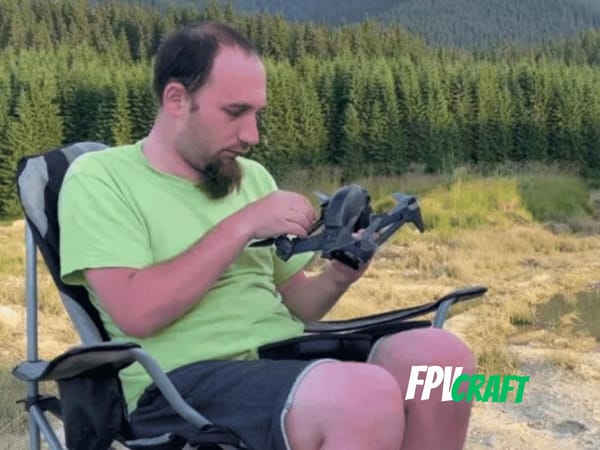Manual Mode vs. Acro Mode on FPV drones
What's the difference between the manual and acro modes on an FPV drone? It's a strange question, but I promise there's an answer to this!
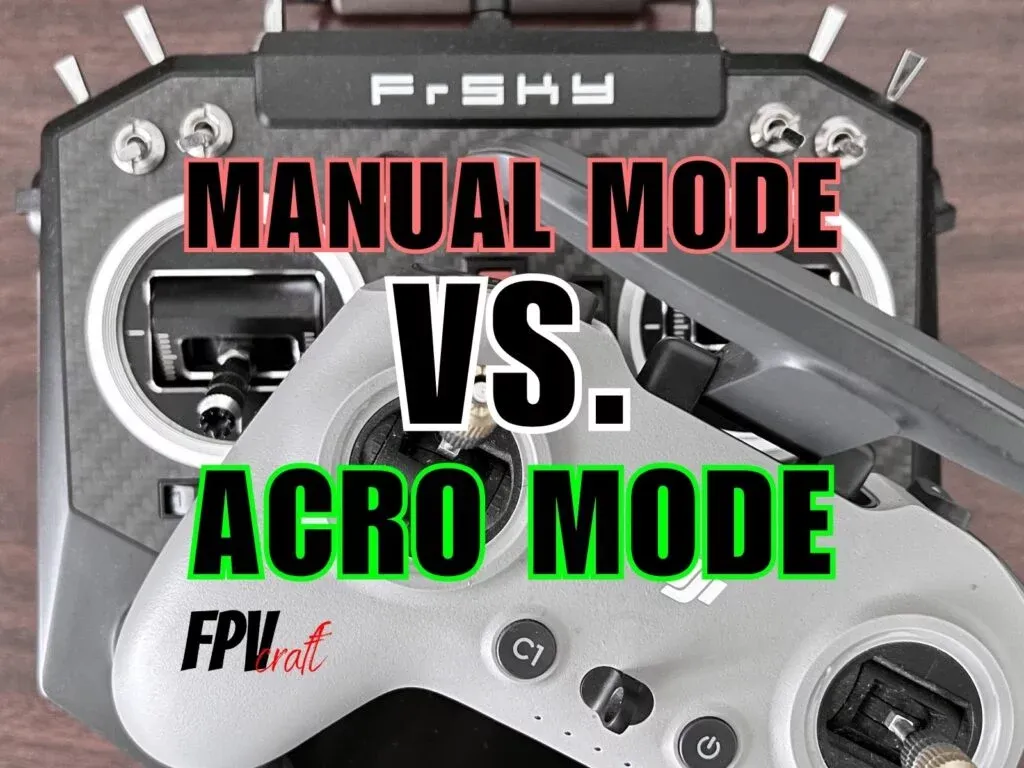
There often needs to be more clarity with the terms we often come across when flying FPV drones. Do you fly in manual or acro mode? What’s the difference?
FPV drones flying in acro can freely perform acrobatic tricks because all the sensors and levelings are disabled on the drone. DJI uses the manual mode term on their FPV drones. Although it may have an identical reference to acro mode, the drone cannot fly acrobatically in manual mode unless you disable the “M Mode Attitude Limit.”
Now, if the short answer isn’t clear or you’re looking for more information, we will add everything you need to know in this article.
What is Acro Mode in FPV drones?
In acro mode, when you push a stick into a specific direction, wherever it is yaw or pitch, the drone will keep rotating at a constant rate instead of being limited by self-leveling sensors.
This opens the way for new possibilities where a combination between throttle, yaw, roll, and pitch can create acrobatic maneuvers with an FPV drone.
If the drone has active self-leveling sensors, it won’t fly in acro mode. This means that no matter how much you push the drone sticks in one direction, the drone will not flip over and remain stabilized after a specific angle inclination.
This would be helpful if you’re looking to fly an FPV drone slowly indoors or to explore, as you have smooth control of the drone without the risk of crashing it.
But this is not acro. With acro, you have total control of the drone, and it is the only mode to perform acrobatic freestyle tricks.
To start flying acro mode, you will need some training in simulators, at least a couple of hours, to get the hang out of controlling the drone.
I would recommend you have a look over this article if you are interested:
» READ MORE: How to Learn FPV in Simulators (Ultimate Guide)
What is the Manual Mode in FPV drones?
Manual mode is a term adopted by DJI after the release of DJI FPV and DJI Avata drones.
It has similarities to acro mode but is not entirely an acro mode.
That’s because you can fly in manual mode the DJI FPV and Avata with the “M Mode Attitude Limit” activated. This is the leveling sensor we talked about above.
With the attitude limit, your drone will act more like Angle Mode rather than Acro Mode.
Pushing the sticks in one direction will limit the drone from flipping over. This is a safety feature as many new FPV drone pilots without a background of flying pure acro mode may crash the drone.
But if you disable the “M Mode Attitude Limit” on DJI FPV or Avata, then the drone will act and fly like an acro drone and can perform freestyle.
Even BETAFPV, with their Cetus Pro and other drones, are using the term “M Mode,” hence “Manual Mode,” even if the drone can fly acrobatically as such.
So remember, acro mode refers only to the drone’s ability to perform acrobatic tricks without restrictions, whereas manual mode is simply a term where the drone may or may not fly in acro mode.
» READ MORE: Tips to Consider Before Your First DJI FPV Manual Flight
Can you do freestyle acrobatics in Manual Mode?
You can do freestyle in manual mode with your drone as long as it has no leveling sensors active.
Disabling all those, such as “M Mode Attitude Limit” or any similar feature to other drones, the drone will act precisely like an acro drone.
And in this case, you can perform acrobatic freestyle.
But if not, the drone will indeed fly similarly to an angle mode and will not be able to perform any freestyle tricks at all.
» READ MORE: 27 FPV Tips to Know Before Flying FPV Drones
Why DJI adopted the term “Manual Mode” on their FPV drones?
DJI is not the first to use the term “Manual Mode” on their FPV drones.
Although used before with other FPV drone kits, DJI decided to cover the biases of wrapping the “M Mode Attitude Limit” under manual and not acro mode because the drone won’t fly acro at all as possibly advertised.
But generally, with DJI FPV or Avata, the manual mode may or may not fly like acro, whereas a drone with acro mode can always perform acrobatic freestyle tricks.
The manual mode is and will probably be used even with further DJI drones related to FPV.
As we only have the M Mode Attitude Limit that underlines the name “manual mode” on DJI drones, there would be no strange that in the future other features may be added with newer FPV drones.
What other FPV flight modes exist?
We have talked about “manual mode” and “acro mode.” But there exist a few more:
- Normal Mode (and Sport Mode): With FPV drones, it is uncommon to find a normal mode and fly an FPV drone like a typical drone. But DJI did it.
- Angle Mode: In FPV, Angle Mode refers to the drone’s self-stabilizing when related to the tilt of the drone. As a rule of thumb, the drone won’t flip over, which is a great mode to start before flying acro or to use when flying a cinewhoop in tight spaces.
- Horizon Mode is something between Angle Mode and Acro Mode. Your drone will self-stabilize if you don’t roll to maximum, but if you do, it will flip over and stabilize itself. It is not a true freestyle acro way to control the drone, but it would be something to start with.
There are a few other modes an FPV drone can have, but these are the main ones to cover now.

